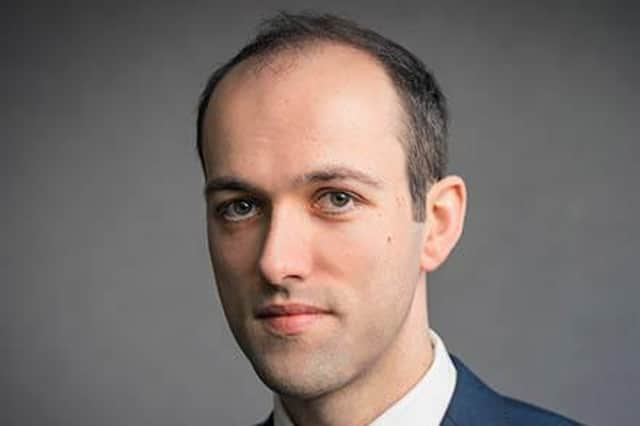Communities are getting smart to take control of local energy generation - Martin Whiteford


In 2020, we saw localism emerge as a force of innovation in the low carbon sector. Community groups, local authorities, housing associations and innovative private sector companies are collaborating to take control of local energy generation and supply, matching local energy supply and demand using digital technology.
The problems in our electricity system are well-known. Capacity on the grid is constrained by the cost and difficulty of reinforcing a UK-wide network designed to transport power from a handful of large power stations to our homes and businesses. Grid connection costs for new generation projects can be prohibitive, particularly for island and rural communities.
Advertisement
Hide AdAdvertisement
Hide AdThe national grid will continue to provide the spine of our energy supply network but there is an opportunity for local energy systems to better serve local needs and local stakeholders while addressing existing system constraints.
Towns, cities, neighbourhoods and regions can own and operate their own energy resources. We need to encourage development of urban microgrids that use digital technology to balance supply and demand. Trading of electricity between producers and users should become the norm. You and your neighbours can become “prosumers” selling excess power to each other through Peer-to-Peer trading. This democratisation of power will be an important part of the transition to a low carbon energy system.
Locally owned and controlled power supply isn’t new. Germany has a long history of municipally owned companies operating city-wide or regional gas and electricity systems. The National Grid was only completed in the 1930s.
The Scottish Government has recently consulted on its forthcoming Local Energy Systems policy and the Local Energy Systems Scottish Industry Network (LESSIN) has recently launched to support the growing local energy ecosystem.
Scotland has already delivered a number of smart local energy systems including the Levenmouth Community Energy Project and the Orkney Surf ‘n’ Turf project (both of which integrated the use of hydrogen). Anderson Strathern has recently advised on the Cloud Zuos project in Huntly and the ReFLEX Orkney project. Both are exemplar projects, involving specialists from different sectors, adopting advanced digital technology to try and make local energy use self-sufficient.
Those devising stimulus and recovery packages could do worse than look at supporting local power projects. Local energy systems benefit groups at the geographical and financial peripheries of today’s economy. Local priorities can be amplified and revenue directed to local needs. Evidence from the first few projects suggest that they create sustainable jobs in maintenance and engineering. Disruptive business models are emerging, expanding the existing small group of companies profiting from power supply. Our local authorities can benefit by engaging directly in the energy market as a means of income generation to help meet budget challenges and to directly address local fuel poverty.
As our lives quickly contracted in March, the resilience of our businesses and institutions to weather major disruption came under intense scrutiny. But we can consider a level of beyond resilience - what has been termed by the author Nassim Nicholas Taleb as “antifragility”. He uses the term to describe things that not only withstand stressors and shocks but get stronger from them.
Many complex organisations and systems are more fragile than they seem, our banks in 2008 being a good example. Local energy systems allow for quick problem solving and immediate decision-making, being highly responsive to local needs. Multiple local power producers would mean less reliance upon a single power station or undersea cable. Cities can become more antifragile by introducing microgrids that can be optimised for specific requirements, by actively collecting data and learning from shocks, encouraging local production and consumption of power and redirecting profit back into the local economy.
Advertisement
Hide AdAdvertisement
Hide AdThe Scottish Government, in their policy consultation, defined local energy systems as those that deliver real value to everyone in local areas and support the growth of vibrant, net zero local communities. At the end of 2020, I suspect this is an ambition we can all get behind.
Martin Whiteford is a Partner, Anderson Strathern
Comments
Want to join the conversation? Please or to comment on this article.